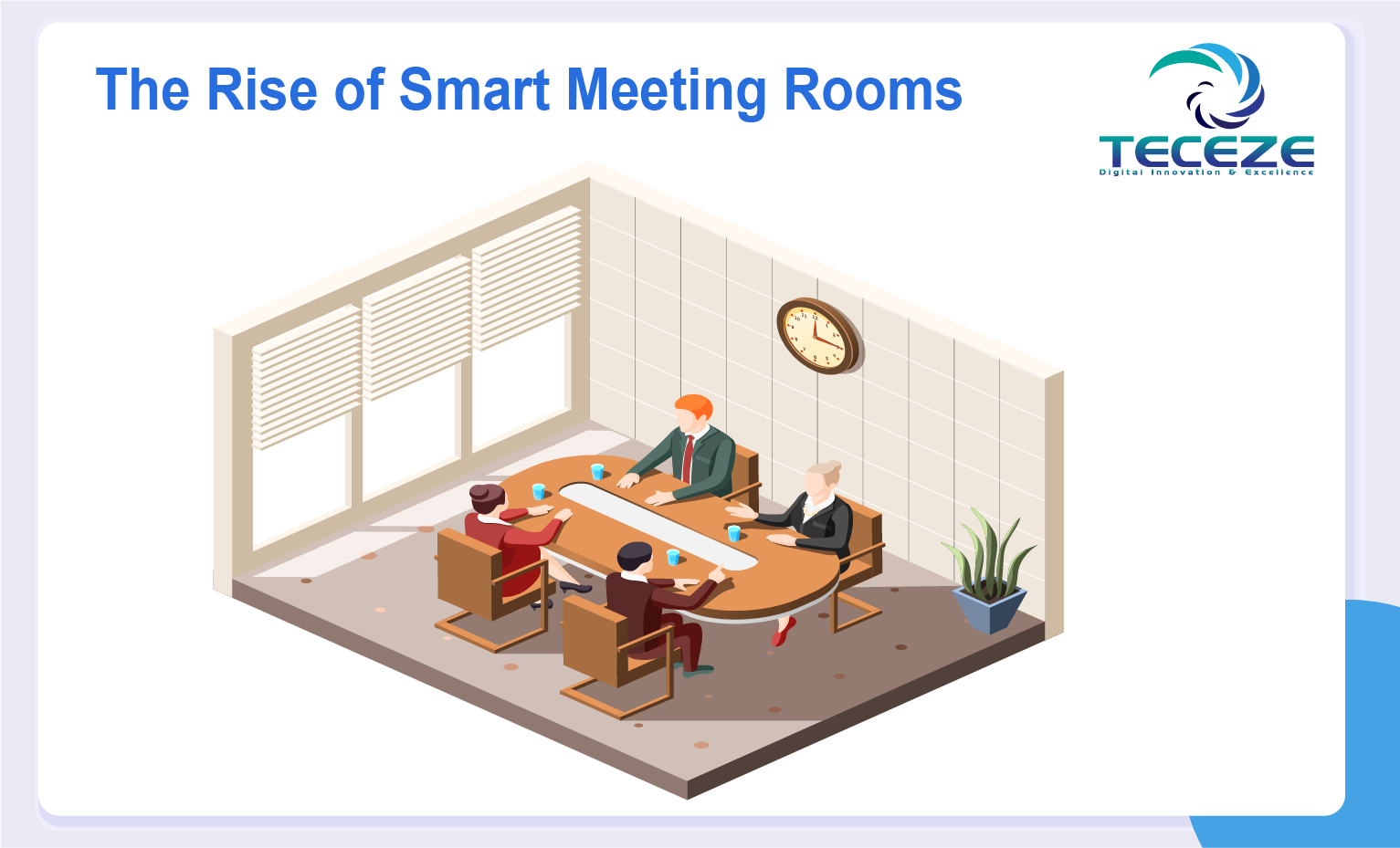The Rise of Smart Meeting Rooms
According to recent research, the adoption of video conferencing is projected to rise by 20 percent by 2022, reaching $41 billion in market value. This, alongside unified messaging and email, would make video communication the second most commonly used medium after the speech. But while video communication demand is rising, traditional video conferencing is increasingly becoming a thing of the past. Gone are the days when video conferencing was primarily used for formal presentations and meetings in large boardrooms.
Today's organizations are turning their emphasis on developing a versatile working atmosphere that includes video-equipped huddle rooms and multi-purpose breakout areas. Despite this, it is estimated that only a small percentage of the estimated 32.4 million video-enabled huddle rooms available worldwide are available.
Video-enabled collaboration has become a crucial component of the efficiency strategy for any company, with almost 50 percent of the UK workforce expected to operate remotely in the next couple of years. But video enabling each room is just the first step in growing productivity. As office spaces are shifting, technology for collaboration is also developing. Video conferencing powered by Artificial Intelligence (AI) is one of the main developments in this area.
The rise of the smart meeting room
Toolkits are beginning to appear to solve these problems. As a leading contender, the "Smart Meeting Room" is emerging, offering greater versatility and affordability. Organizations are beginning to respond by building Smart Meeting Rooms across the organization, rather than investing solely in the main corporate boardroom.
How is video conferencing transformed by AI?
Some of the major benefits of using sophisticated AI will significantly enhance the overall user experience. With the aid of automated, time-consuming teamwork activities, this will help to drive efficiencies incrementally.
The key fields in which AI can help accelerate innovation are:
- Analytics for the meeting room
- NLP (Natural Language Processing)
- Vision of computers
Advantages of artificial intelligence for meeting room analytics
For employees, bad meetings are a constant annoyance, and while AI meeting Analytics is a nascent field, the potential for effect is enormous. There are a variety of presently accessible early meeting metrics, including details on who talked and for how long. While this sounds easy, a significant development is the ability not only to interpret speech but to recognize the speaker. Data on how many people were in the meeting room is more immediately useful, as this gives insights into the use of meeting rooms and future planning.
In the short term, if the same subject has been addressed for more than a given threshold, we look forward to developments that will warn managers. For anyone interested, the system may define the form of meetings and display short summaries. Deep learning would not only be able to indicate whether a meeting was successful or poor further down the line, but also recognize the cause and recommend changes. Recognition of emotions would also allow the system to recognize which participants were suspicious or unsure about a new proposal and give the presenter a note to follow up with any material tailored to those people.
How has Natural Language Processing helped boost meeting rooms?
Natural Language Processing (NLP) can be used in a variety of ways to enhance video conferencing: from allowing the meeting to be automatically transcribed, to exchanging actions and notes, to translating the interaction into different languages. Combined with AI, natural language processing can also allow virtual assistants and chatbots to begin, enter, and leave meetings via voice command.
There are also other applications: AI combined with NLP, automatically suppressing echo and minimizing background noise, will allow better audio quality. E.g., if someone in a meeting wants to eat a packet of crisps, the technology is smart enough to muffle this background noise. This will make it easier to hear and understand everyone in the meeting, combined with emerging techniques such as automated leveling and beamforming.
With Computer Vision, AI will offer an excellent user experience!
However, without advances in the use of computer vision in video conferencing, none of this will be possible. By allowing the camera to identify who is talking and zoom into the individual, computer vision will drive changes in video meetings. It could also monitor how many individuals are in the meeting and tag relevant participants. Gaze correction and even monitoring the background environment in the room to enhance user experience are other advanced applications of the technology.
Computer vision, combined with AI, can help drive intelligent color and light correction. To emphasize faces, even in dim or backlit conditions, it can detect visual problems automatically and optimize light balance. Video cams can track human figures in the room throughout the meeting with smart camera control, allowing the camera to automatically pan, tilt, and zoom to the center and frame participants comfortably. For more interactive meetings, for example, if someone moved into the room to draw a diagram on a flip chart, this could be particularly helpful.
Teceze Speeds Up Workplace Communications
Today, new technologies in corporate meeting rooms have facilitated business communications and increased efficiency. The office environment is being redefined by Smart Meeting Rooms, which intelligently integrate hardware and software technologies.
Participants seek an experience as simple and seamless as possible when sharing content or screens in the meeting rooms.
As a meeting room solutions expert, Teceze has introduced IT and AV technologies for users to connect quickly to an instant, intuitive wireless presentation system without the hassle of setting up software or drivers. There is greater spontaneity and enhanced collaboration across the teams since employees can connect and share the presentations immediately with just one click.
Toolkits are beginning to appear to solve these problems. Smart screens, intelligent cameras, and high-quality microphones are simple solutions that go a long way in enriching the meeting room.
 Back to Insights
Back to Insights
 Previous
Previous 